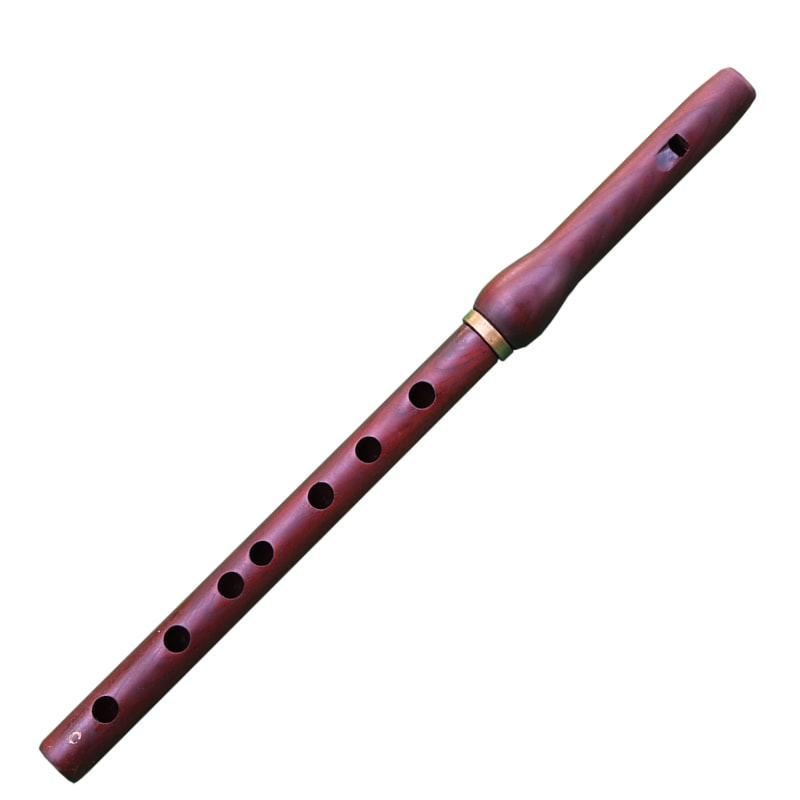Shvi
Woodwinds
Asia
Between 0 and 1000 AD
Video
The term “shvi” (Շվի) literally translates to “whistle” in Armenian, highlighting its primary function as a melodic instrument. This name underscores the instrument’s simplicity and accessibility, as it was traditionally used by shepherds and in rural settings. It is a traditional Armenian fipple flute, characterized by its labium mouthpiece. This instrument typically measures around 15 to 18 inches (approximately 380 to 460 mm) in length and is commonly crafted from materials such as wood (including apricot, boxwood, or ebony) or bamboo.
Characteristics of the Shvi
- Sound Range: The shvi can produce a wide range of notes, often spanning several octaves. Specific models may have different tuning ranges; for example, one model has a range from F2 to G#4.
- Construction: The quality of the wood used significantly influences the sound quality. Instruments made from aged apricot wood are particularly valued for their tonal qualities, with some woods being dried for up to 10 years before crafting.
- Playing Style: The shvi is versatile and can be played across various musical styles. It is frequently featured in traditional orchestras as the highest-pitched instrument.
Cultural Significance
The shvi holds an important place in Armenian music, often associated with folk traditions and contemporary performances alike. It is played by musicians both within Armenia and internationally, contributing to the rich tapestry of Armenian musical heritage. The shvi is a traditional Armenian wind instrument, deeply rooted in the country’s rich cultural and musical history. Its name, derived from the Armenian word for whistle or flute, reflects its simplicity and charm.
How to Play Shvi
Basic Playing Techniques
To effectively use the shvi, an Armenian fipple flute, follow these guidelines:
- Holding the Shvi: Hold the shvi with both hands, ensuring that your fingers can comfortably cover the holes. The instrument typically has eight holes—seven on the front and one thumb hole.
- Producing Sound: To produce sound, blow gently into the labium (the mouthpiece). A normal breath will yield notes in the lower octave, while a stronger breath (overblowing) will reach higher octaves. Unlike some wind instruments, the shvi’s embouchure (the way you shape your mouth) has less impact on pitch but can affect tone quality. Experiment with different mouth shapes to find what works best for you.
- Fingering: Use your fingers to cover the holes to create different pitches. The shvi follows a stepwise fingering pattern similar to that of other woodwind instruments like recorders or flutes. For halftones, you can employ a technique called half-fingering, where you partially cover a hole.
- Octave Control: The shvi can produce a range of about one and a half octaves. Transitioning between octaves involves adjusting your breath pressure; lighter blows produce lower notes, while firmer blows yield higher notes.
- Tuning and Adjustments: Some shvi models allow for fine-tuning by adjusting connections between parts or through slight modifications in finger positioning. Regularly check if your instrument is in tune, especially before performances.
Advanced Techniques
- Ornamentation: Incorporate traditional Armenian ornamentation techniques to enhance your playing style.
- Expressiveness: Use dynamics (varying loudness) and articulation (how notes are played) to express emotion in your music.
The shvi, an Armenian fipple flute, has a rich history intertwined with the cultural and musical traditions of Armenia. Its name, meaning “whistle” in Armenian, reflects its primary function as a melodic instrument.
Historical Background
Ancient Roots: The shvi is believed to have ancient origins, with references to similar instruments found in historical texts. It is often associated with pastoral life, traditionally played by shepherds to accompany their daily routines and express their emotions through music.
Cultural Significance: Throughout history, the shvi has played a vital role in Armenian culture, accompanying various social events such as weddings, funerals, and religious ceremonies. Its sound is integral to the folk music of Armenia, where it is often used alongside other traditional instruments like the duduk and zurna.
Evolution of the Instrument: The shvi has evolved in terms of construction and materials. Traditionally made from apricot wood, reed, or willow bark, its design can vary in length from 12 to 18 inches. The instrument typically features eight holes—seven for playing and one thumb hole—allowing for a range of notes that can be manipulated through breath control and finger positioning.
Modern Usage
In contemporary times, the shvi remains popular among musicians in Armenia and the diaspora. It serves not only as a tool for traditional folk music but also finds its place in modern compositions. Musicians often learn to play the shvi before advancing to more complex instruments like the duduk or zurna, highlighting its foundational role in Armenian music education
FAQ
Who are the famous players of Shvi?
The shvi, a traditional Armenian flute, has been played by many skilled musicians, particularly in folk and classical Armenian music. Notable shvi players include Levon Madoyan, recognized for preserving and promoting Armenian folk music. Additionally, Djivan Gasparyan, though famous for the duduk, has occasionally showcased the shvi's melodies. Many contemporary Armenian folk ensembles feature talented shvi players who continue to celebrate this instrument's heritage.
What is the place of origin of shvi?
The shvi originates from Armenia and has been a part of Armenian folk music for centuries. This traditional flute is deeply rooted in the country's cultural and musical heritage, often used to play pastoral melodies and accompany dances. Its history is tied to the rural traditions of the Armenian highlands.
How does shvi work?
The shvi works by blowing air through its mouthpiece while covering and uncovering finger holes along its body to change pitch. The player controls the airflow and fingering to produce clear, melodic tones. Made from wood, bamboo, or metal, the shvi’s simple design allows it to produce rich, expressive sounds ideal for traditional Armenian music.
 Links
Links
References
Other Instrument
Categories


















